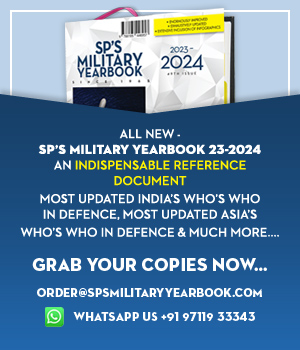INDIAN ARMED FORCES CHIEFS ON OUR RELENTLESS AND FOCUSED PUBLISHING EFFORTS
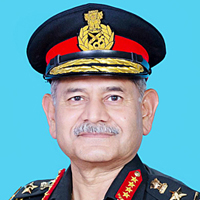
The insightful articles, inspiring narrations and analytical perspectives presented by the Editorial Team, establish an alluring connect with the reader. My compliments and best wishes to SP Guide Publications.
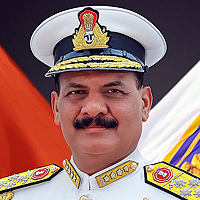
"Over the past 60 years, the growth of SP Guide Publications has mirrored the rising stature of Indian Navy. Its well-researched and informative magazines on Defence and Aerospace sector have served to shape an educated opinion of our military personnel, policy makers and the public alike. I wish SP's Publication team continued success, fair winds and following seas in all future endeavour!"

Since, its inception in 1964, SP Guide Publications has consistently demonstrated commitment to high-quality journalism in the aerospace and defence sectors, earning a well-deserved reputation as Asia's largest media house in this domain. I wish SP Guide Publications continued success in its pursuit of excellence.
India's Arctic Outreach
A melting Arctic and the race for Greenland will be focus of the Strategic Summit during Prime Minister Modi's Norway Visit
 |
The Author is former Chief of Staff of a frontline Corps in the North East and a former helicopter pilot. He earlier headed the China & neighbourhood desk at the Defence Intelligence Agency. He retired in July 2020 and held the appointment of Addl DG Information Systems at Army HQ. |
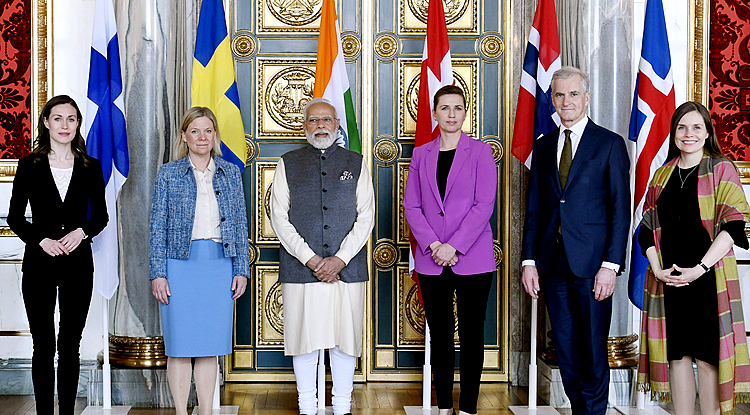
As the Arctic ice begins to melt with the onset of summers, Prime Minister Narendra Modi is scheduled to visit Norway in mid-May for the 3rd India-Nordic Summit. Leaders from Norway, Denmark, Sweden, Finland, and Iceland will join to discuss trade, innovation, green energy, climate change, and blue economy. But beyond the official agenda, the leaders are sure to discuss in pull-asides, fire-side chats and in banquets, the most interesting and consequential, if a little quixotic development concerning the region, President Trump's quest to grab Greenland.
Greenland, endowed with rare earths, uranium, and strategic resources, has become a new theatre of global competition between the United States and China
Greenland's Resource Wealth and Strategic Importance
President Trump's Greenland grab is interesting since it is an autonomous or self-governing territory of close NATO ally Denmark. But like most other Trump pronouncements that on the surface appear as just casual, intuitive and presumptuous outbursts, the attention to Greenland has sound basis. Back in 1946 in the aftermath of WW II, President Harry Truman's Secretary of State James F. Byrnes had offered $100 million to Denmark in exchange for Greenland which was considered essential for US bases. Home to about 56,000 mostly indigenous Inuit people who live on the south-western coast around the capital Nuuk, Greenland houses US military bases since 1950.
India, though not an Arctic nation, is carefully leveraging its strategic partnerships—especially with Russia—to emerge as a relevant player in the Arctic region
In recent years, there has been increased interest in Greenland's natural resources, including mining for rare earth minerals, uranium and iron. It's endowed with the eighth largest reserves of so-called rare earth elements, which are vital for making everything from mobile phones to batteries and electric motors. It also has large amounts of other key metals, such as lithium and cobalt. There is oil and gas too, but new drilling is banned, while deep-sea mining has also been ruled out. For now.
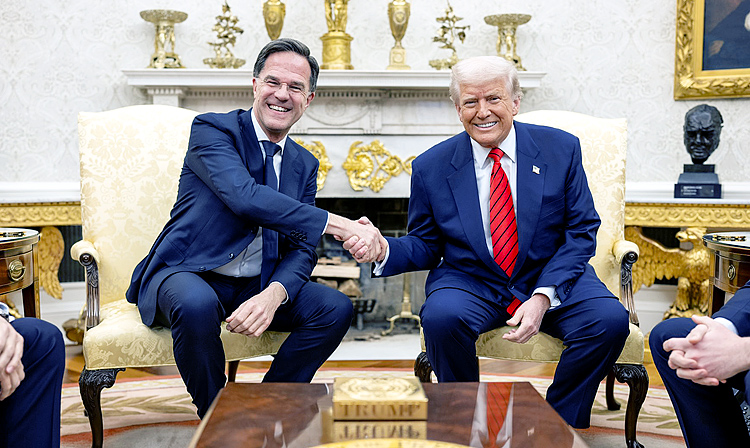
Given the strategic Arctic coastal dimension and the enormous reserves of natural resources, Greenland is highly attractive to foreign states, including China. As it has done in Panama (the other sovereign territory of interest to President Trump), China has moved in aggressively to gain control over the strategic assets of Greenland. Greenland's economy is mainly based on fishing. China serves mainly as one of the most important markets for the Greenlandic fish. In 2014, an MoU was signed between Greenland Minerals and Energy (GME) and China Non-Ferrous Metal Industry's Foreign Engineering and Construction Company. Next year, Greenland self-government announced talks about airport, port, hydroelectric and mining infrastructure development with Sinohydro, China State Construction Engineering, China Harbour Engineering. Then in 2016, Shenghe Resources of China bought one-eighth of Greenland Minerals and Energy stocks, which develops a uranium and rare-earth site at Kvanefjeld. Given its small population and looking for investments beyond what Denmark can afford or care to allocate, Greenland is open for exploitation. The moves and counter moves by the US and China are par course. But what is India's gamble in the region?
With the Arctic melting rapidly due to climate change, the region is opening up new frontiers for shipping, mineral extraction, and military deployment, reshaping global geopolitics
The Arctic ice has been melting at a rapid pace especially in the past two decades due to emission of greenhouse gases and deposits of black smoke emissions from bunker fuel used by ships that traps heat. The Arctic melting open up a whole new chapter in global geopolitics as it will mean newer and shorter routes for shipping and airlines, extraction of its rich rare earths and mineral wealth, potential for fishing and above all, as a sphere for military deployments. The competition is heating up though Russia is the most consequential power in the region, having invested early and heavily, apart from the fact that nearly 2.3 million of the total four million people that inhabit the Arctic region are Russian.
India's Arctic Aspirations: Observer with Ambition
That is one reason why India has also thrown its hat in the ring. Though not an Arctic country, India has ambition to be a significant player in the Arctic region. In 2013, India got an observer status in the Arctic Council which was created in 1996. With eight members, viz. Canada, Denmark, Finland, Iceland, Norway, Russia, Sweden and United States, the Council is mandated to promote various levels of cooperation, coordination among the Arctic States, indigenous communities and other Arctic inhabitants on the common Arctic to discuss and resolve issues on sustainable development and environmental protection in the Arctic. Interestingly, the US was not an Arctic country till 1867 when it purchased Alaska from the Russian Empire for a princely sum of $7.2 million. Trump is on a similar mission.
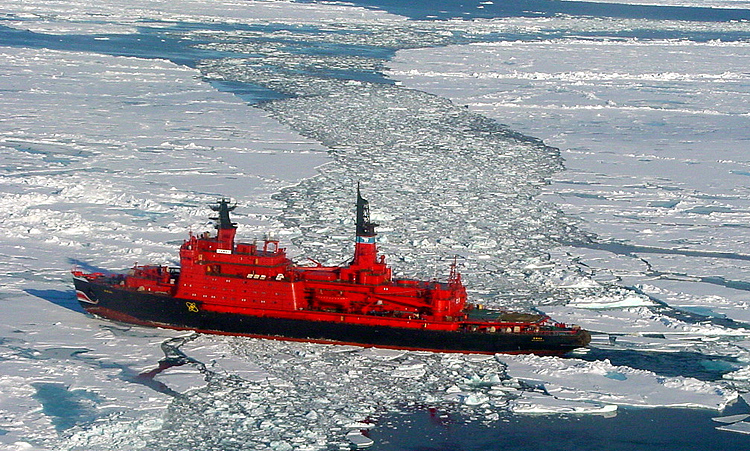
India has moved its pawns carefully on the geopolitical chessboard of the Arctic. It can not compete with China in terms of deployable financial resources or in the fields of infrastructure engineering or mineral extraction. What India banks on is its carefully nurtured relationship with the big players of the Arctic. India has an enduring strategic relationship with the biggest Arctic power Russia whose Arctic coastline makes up 53 per cent of the total Arctic coastline. In a related development, Russia has awarded a contract to India to construct four non-nuclear icebreaker ships. This decision positions India as a key player in Arctic affairs. Estimated to cost around $750 million, Russia chose India over China possibly due to the potential to utilise funds held in Indian Rupee Vostro account related to payments for discounted oil imports from Russia in INR since the breakout of Ukraine war, where more than $3.5 billion is idling.
Russia's decision to award India a $750 million icebreaker shipbuilding contract reflects deepening Arctic cooperation and the evolving balance of influence in the polar north
India's Role in an Evolving Arctic Order
While President Trump has used his typical 'wild west' style of whipping out the pistol to announce that there is a 'new Sheriff in town', as his Vice President J.D. Vance likes to put it, India has moved more subtly. At the height of COVID pandemic, Prime Minister Modi hosted Danish Prime Minister Mette Frederiksen in October 2021, the rightful owners of Greenland, the reason why Denmark finds a place on the Arctic Council. This was followed by a return visit to Denmark in May 2022 for the second Indo-Nordic Summit. Norway is hosting the third edition of the summit in the backdrop of the raging contest over Greenland, the war in Ukraine and Russia's gradual return to mainstream global geopolitical arena on Trump's return to the White House. Norway's sovereign wealth fund, valued at over $1 trillion, is a major investor in India.
The fallout from tariff wars and redrawing of the global supply chains throws up many opportunities for India. India can act as a bridge between Russia and the Nordic states in the race for control in the Arctic given the adversarial relationship between them since the Ukraine war started three years ago. Having built up capacities in the field of shipyards, port management and renewable energy, India hopes to leverage its soft power to elbow its way into the Arctic.




